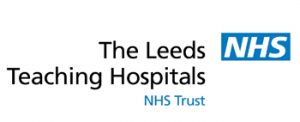 Garry Goyne, from the Patient Access and Flow team, completed a connecting placement at St James University and Leeds General Infirmary in late 2017 and Garry has kindly provided us with an interesting insight as to how his 2 days went.
Garry Goyne, from the Patient Access and Flow team, completed a connecting placement at St James University and Leeds General Infirmary in late 2017 and Garry has kindly provided us with an interesting insight as to how his 2 days went.
Waking up on the first day of my Connecting placement I felt a strong sense of excitement, but also nervousness surrounding what my experience would involve and the areas I would be exposed to at St James’s University Hospital. This was probably a good thing as it made me consider the feelings and emotions that many will feel when going into hospital as a patient or visitor.
After a brief induction, surrounding health and safety and patient confidentially, along with having a security pass issued, I was ready to get started! First up, the Referrals and Bookings team who, on behalf of each speciality area, have the task of ensuring prompt conversion of referrals into booked hospital appointments. To give you an idea of how busy the team is, they handle over 45,000 calls each month.
It was really encouraging to hear and observe the innovation taking place to minimise patient non-attendances: automated text reminders, call-backs to abandoned calls and not issuing postal appointments until patients have accepted an appointment verbally.
One heart-warming moment occurred when a call was made to a 92 year old to arrange an urgent suspected cancer appointment. The staff member was booking the first available appointment and the patient mentioned that this clashed with her only Christmas meal at a local community centre. Showing great compassion for the overall wellbeing of the patient, the staff member liaised with her Team Leader to secure an alternative appointment.
After a quick top up of coffee over lunch I was ready for the next round. This time I was heading to the Urgent Care team to observe their patient flow management. The first task was to check wards to identify patients ready for discharge or movement to a standard ward – no ringing around or checking computers here, rather turning up to the nurses’ station and speaking with the nurse in charge to get real time information and consider system-wide oversight of bed availability.
There was a real sense of the importance of the patient flow manager in ensuring a big picture view is taken and acknowledging the service it has to provide to A&E colleagues particularly in having ongoing bed availability. There were many examples of situations being escalated to senior staff to ensure a consistent patient centric approach.
One impressive initiative that was showcased was a pilot for patients requiring intravenous antibiotics. Rather than being kept in hospital, patients are invited back on a regular basis to have the treatment administered by a multi-disciplinary team.
A recent success was one patient who was seen first thing on a morning and who was then able to travel to work. This felt like a fantastic example of a modern healthcare solution, ensuring the right treatment is delivered with minimal disruption to patients’ lives.
My second morning began with what would be the first of 3 meetings during the course of the day for information sharing across critical care wards, discussing pressure points and giving a real time RAG service rating. The initial meeting examined closely the number of patients due in surgery and the resulting care levels required.
It was so positive to hear the passion across teams to ensure that procedures go ahead using a risk based approach for decision making to minimise cancellations. Even at this clinical level, a key piece of data which I regularly review in my day job, was taken into account (the Referral to Treatment (RTT) waiting period).
I then had a chance to witness the work that goes into the creation of nursing rosters and determining resource requirements. The Trust has taken big steps forward in ensuring staff can be flexibly deployed between units. It was also encouraging to hear about the work that the Trust has done to enhance the financial incentives for bank staff, which is helping to decrease more expensive spend with agencies.
Having joined the Department of Health & Social Care from a non-clinical background I feel the Connecting programme has developed my awareness of NHS services generally, along with a respect for the efforts of patient flow managers for delivery of the patient access standards I work with each day. I was also struck by how welcoming, friendly and open to questions staff was despite being under constant pressure.
Want to know more about how Connecting can help you and your team? The Connecting team (Jane Ellis in London and Roy Axon and Sophie Collinson in Leeds) would be very happy to join in with team meetings – get in touch via the Connecting mailbox (connecting@dh.gsi.gov.uk)